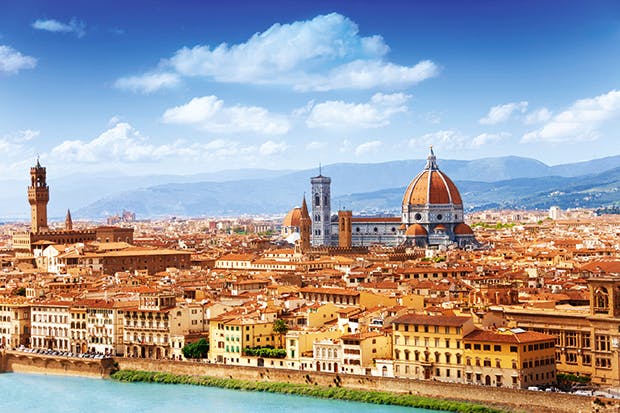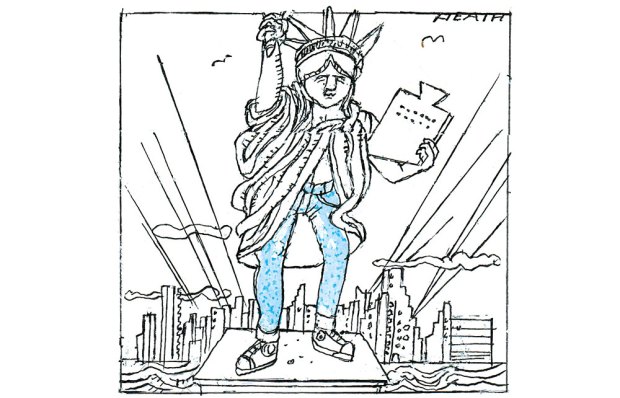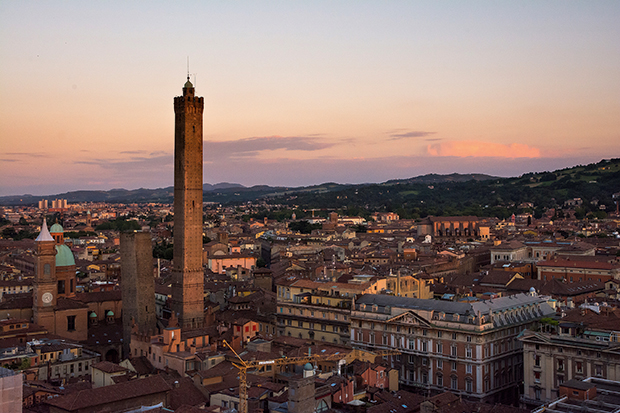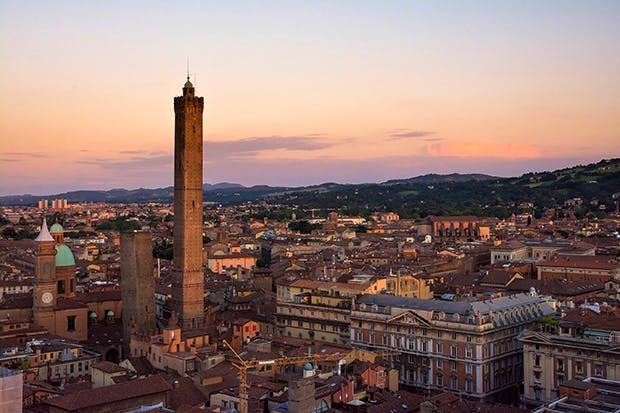Once, it seems, Sandro Botticelli played a trick on a neighbour. Next door was a weaver who possessed eight looms. He and his assistants kept these in constant use, creating such a judder-ing racket that the poor painter was unable to concentrate on his pictures. Botticelli implored this fellow to reduce the noise, but to no avail. So eventually the artist carried an enormous rock on to his roof, poised so the slightest vibration would bring it crashing through the noisy weaver’s premises. The man then saw reason.
You can easily imagine the problem today as you walk down Botticelli’s street, Via del Porcellana. It’s a long, narrow thoroughfare running down to the Arno, tightly packed with three- and four-storey buildings. Although the nature of the small businesses that line it have changed through the centuries, essentially this area is probably much as it was in the 15th century.
It is not hard to sense medieval Florence as it really was: not the poetically venerable place imagined by the Pre-Raphaelites, but a pressure-cooker of competing artisans, merchants and bankers, full of anger and innovation, loving arguments and pranks. Vasari, chronicler of artists’ lives, interspersed his description of Botticelli’s career with the tale of the noisy weaver and a couple of hard-hearted practical jokes the painter played on friends.
Botticelli, currently the subject of exhibitions at the V&A and Courtauld Gallery, became a superstar of art long after his death. The Victorians loved his sad-eyed Madonnas and Venuses, and we do too. But his contemporaries valued his sharp tongue almost as much. He told Leonardo da Vinci that studying landscape was a waste of time because you could get results as good by throwing a paint-stained sponge at the wall. But Botticelli landscapes don’t look like sponge-stains, so he probably just wanted to upset Leonardo, who loved to study views.
The Florentines were a quarrelsome people, to an extent that drove Machiavelli to despair in the history he wrote of his native city. Throughout the Middle Ages, the place splintered into new warring factions. The Guelphs fought with the Ghibellines, then the Black Guelphs with the Whites. The winning gang always exiled the losers and expropriated their property. Dante, a White Guelph, fell victim to these squabbles. In Botticelli’s days, the fissiparous Florentines continued to split, plot and fight.
The strange thing is that all this turmoil — combined with plague and warfare — did little to diminish the city’s vim. The Black Death put a temporary brake on things. But the great days, during which Florentines produced an extraordinary succession of innovations in the arts, literature, engineering and finance, ran from the 13th century to the Renaissance.
It was only when the Medici, originally a clan of sharp-elbowed money-changers and cloth-dealers much like many another, managed to install themselves as grand dukes in the mid-16th century that the sequence of Florentine achievements tailed off. Two military strongholds — the huge Fortezza da Basso and the Forte di Belvedere above the Boboli Gardens — are evidence of the force by which the Medici suppressed their fractious subjects. The result was centuries of peace — and reduced creativity.
Got something to add? Join the discussion and comment below.
Get 10 issues for just $10
Subscribe to The Spectator Australia today for the next 10 magazine issues, plus full online access, for just $10.














Comments
Don't miss out
Join the conversation with other Spectator Australia readers. Subscribe to leave a comment.
SUBSCRIBEAlready a subscriber? Log in